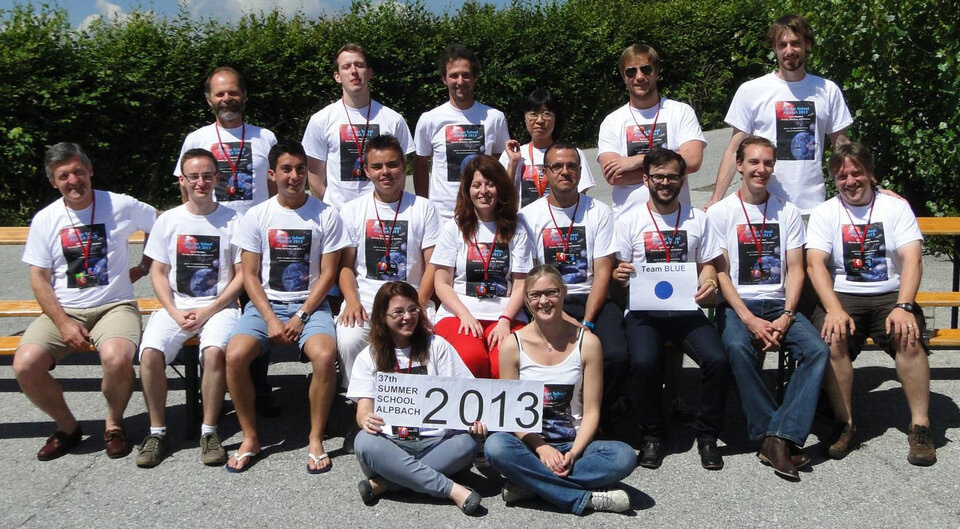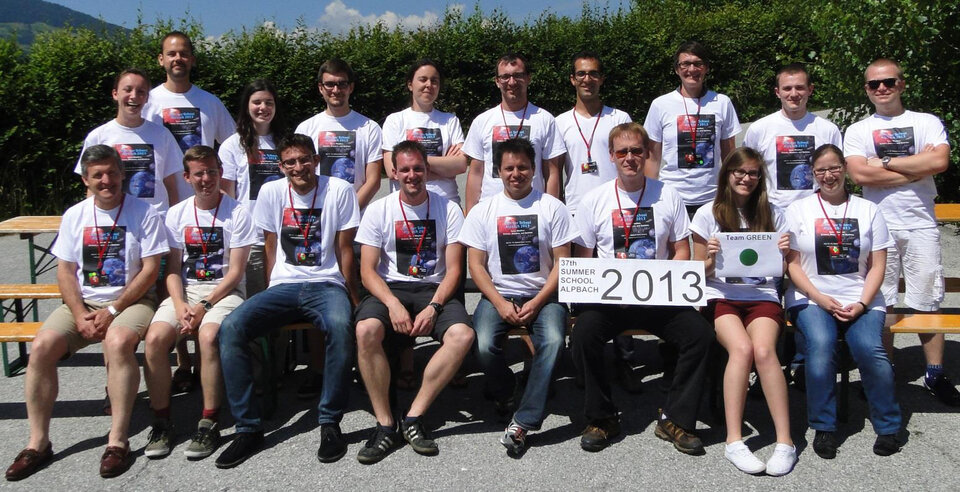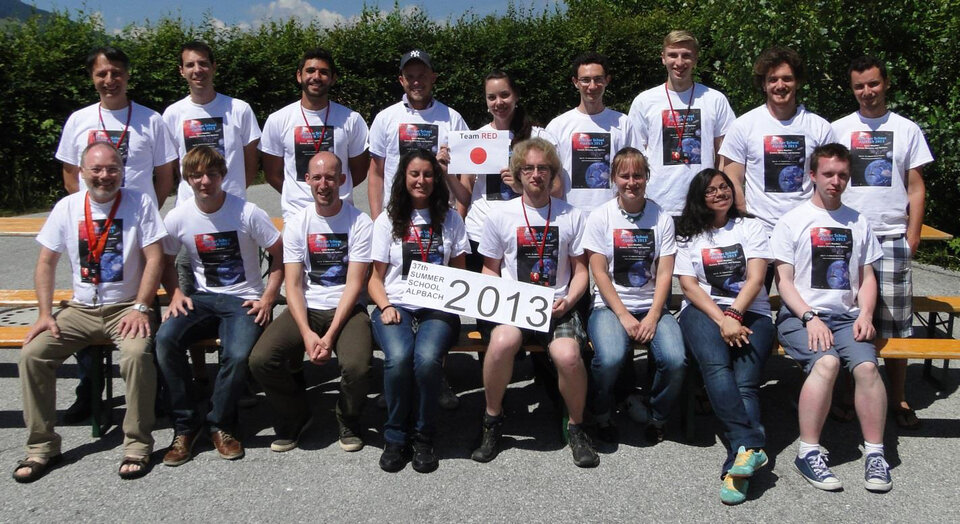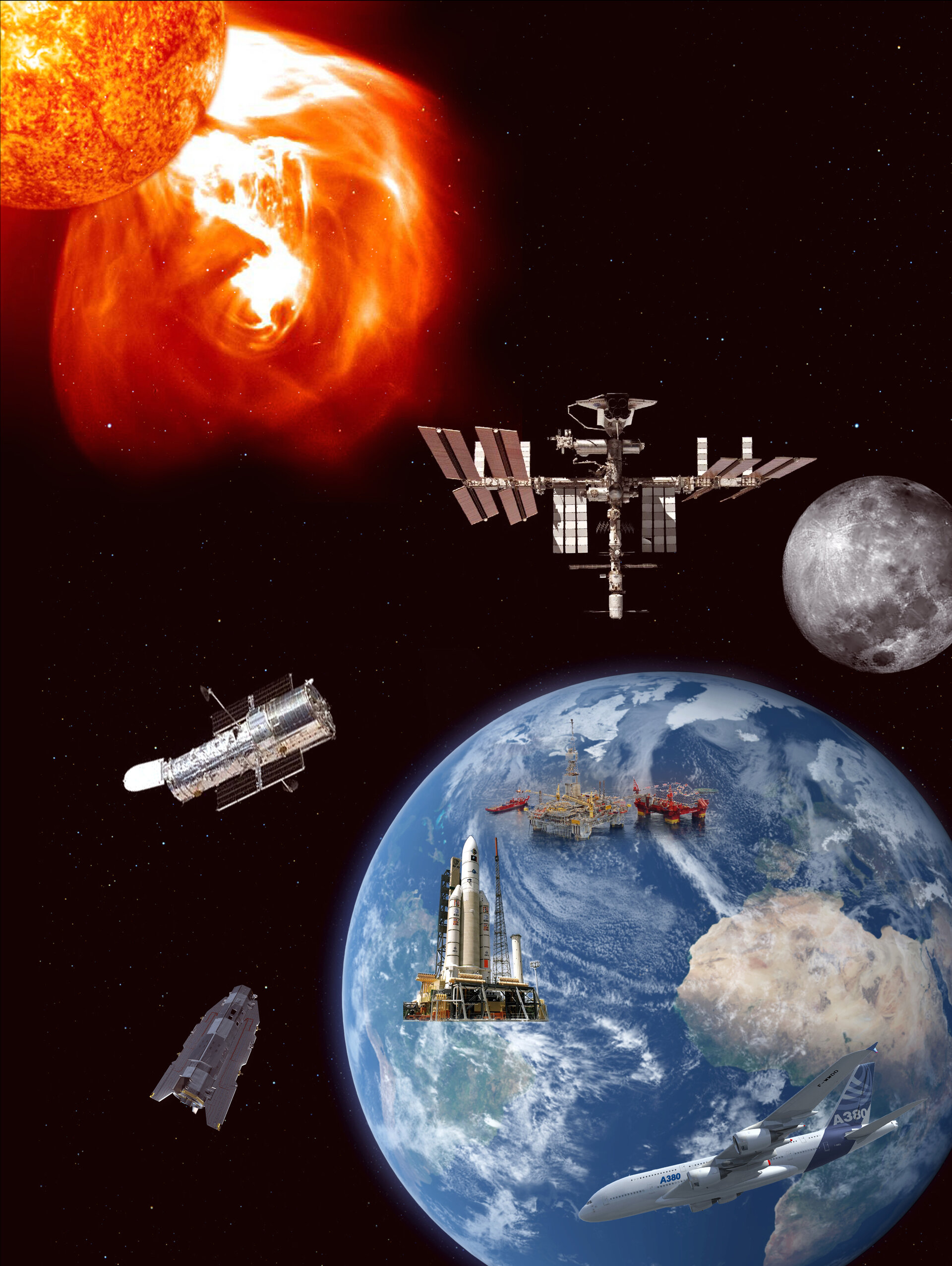Alpbach students design missions to study space weather
60 future researchers from 18 of ESA’s Member States recently attended the 2013 Alpbach Summer School, held in the beautiful Austrian Tyrol. This year’s meeting, held 16 - 25 July, focused on the theme ‘Space Weather: Science, Missions and Systems’.
The Summer School addressed innovative mission concepts to study how solar activity can impact near-Earth space, sometimes damaging satellites in Earth orbit and ground-based infrastructures such as electrical power networks or pipelines.
As usual, the programme was divided into two sections. The first few days were taken up with a series of introductory lectures. These covered the many different aspects of space weather, as well as providing an overview of current space missions and techniques aimed at its study.
The lectures provided a foundation for the workshops, the other key element of the programme. During these sessions, the students were divided into four teams and then asked to design their own innovative mission to study space weather, supported by the lecturers and tutors.
The proposals put forward by each team were:

Team Blue: CARETAKER (Coronal Mass Ejection Analysis Reporting to Earth To Allow Keeping Everything Running).
The mission intends to launch 6 satellites on an orbit around the Sun at 0.72 AU in order to study large scale solar eruptions, particularly CMEs. The spacecraft obtain in-situ measurements of the solar wind, as well as observing the corona and the interplanetary environment. Communication is provided 24/7 by two ground stations. The mission provides space weather early warning as well as key scientific data.

Team Green: PAC2MAN (Photospheric And Chromospheric and Coronal Magnetic field Analyser).
The mission’s main goal is to understand and predict the initiation and development of potentially hazardous Coronal Mass Ejections (CME) and flares. It also determines the speed and direction of CMEs in order to forecast solar wind conditions near Earth in near-real-time. Two spacecraft each carry a payload designed to operate for 6 years. One spacecraft is located at the L1 Lagrange point of the Sun-Earth system and the other is in a heliocentric orbit, trailing Earth by 80 degrees.

Team Orange: ADONIS (Atmospheric Drag, Occultation 'N' Ionospheric Scintillation).
This mission studies the dynamics of Earth’s thermosphere and ionosphere over a full solar cycle, using two spacecraft in low Earth orbit. It investigates satellite drag with in-situ measurements, and ionospheric electron density profiles with radio occultation and scintillation measurements. The low cost constellation can be launched using a single Vega rocket and most of the instruments are already space-proven.

Team Red: OSCAR (Observatories of Solar Corona and Active Regions).
This is a mission to identify 3D structure of coronal loops, study the trigger mechanism of CMEs in solar active regions and their evolution and propagation processes in the inner heliosphere. It also enables monitoring and forecasting of the CMEs and Corotating Interaction Regions, which are major sources of magnetic storms. OSCAR uses two spacecraft, separated by about 68° along Earth’s orbit, to provide an optimum stereoscopic view of the solar corona. The 5 year mission would launch in 2022-2025.
On the last day of the summer school, each group presented its mission concept to a panel of experts, chaired by Roger Bonnet, the former Director of the International Space Science Institute.
After careful deliberation, the ‘oscars’ were awarded as follows: Team Green for Best Case; Team Red for Best Technical Case; Team Blue for Best Improvement / Development; and Team Orange for Most Competitive Mission. The winner of the Best Quality Of Presentation category was Team Green.
The Alpbach jury selected the CARETAKER mission of Team Blue as the best suited for further development during a special Post Alpbach workshop - sponsored by ESA – to be held 6-13 December 2013 in Graz, Austria. 15 of the Alpbach students will be selected to attend the workshop, with the possibility of eventually presenting a paper at a scientific congress and/or in a scientific journal.
Background
Held annually since 1975, the Alpbach Summer School provides in-depth teaching on different topics of space science and technology, with the aim of advancing the training and work experience of European students, young scientists and engineers. The Summer School is intended to enable students to apply the knowledge derived from lectures, to develop organisational and teamwork skills, and to encourage creativity.
The Alpbach Summer School 2013 was organised by the FFG, Austria. It was co-sponsored by ESA and the national space authorities of its Member and Cooperating States, with the support of the International Space Science Institute (ISSI) and Austrospace.




